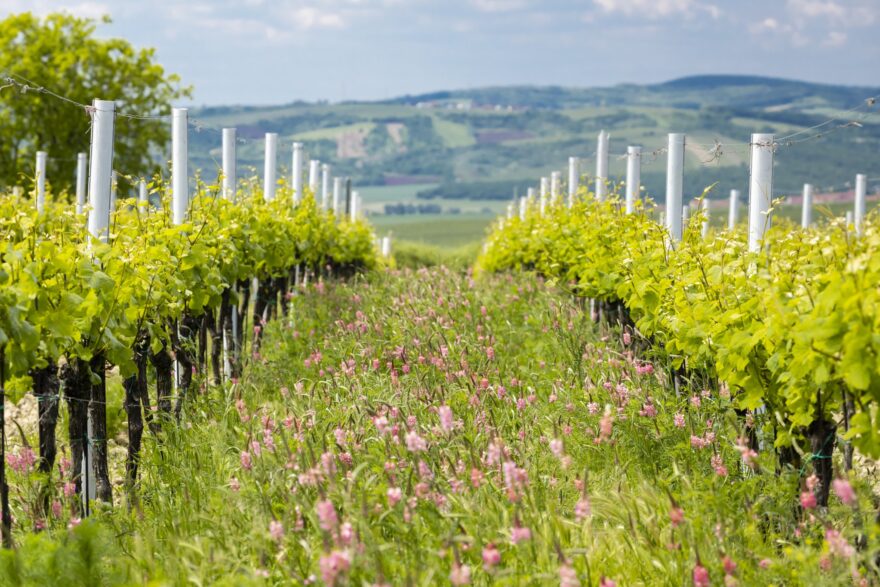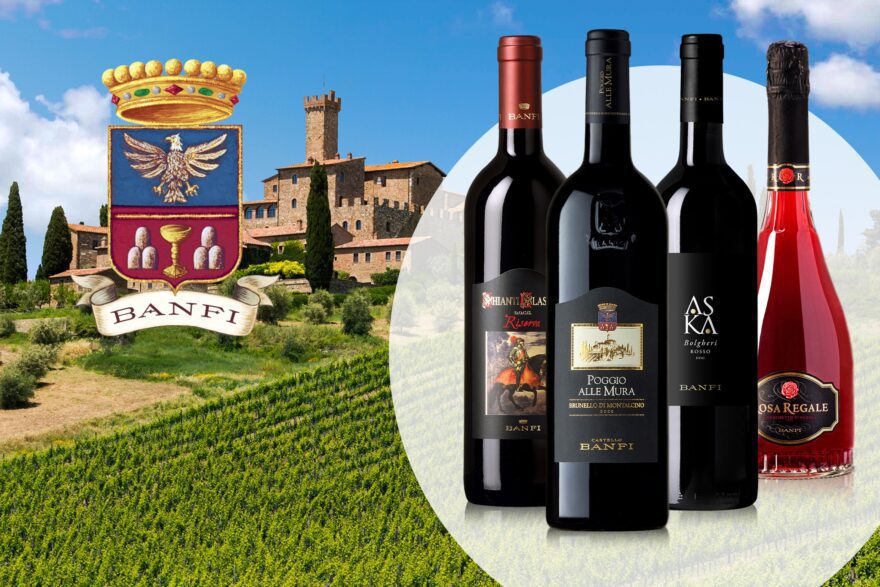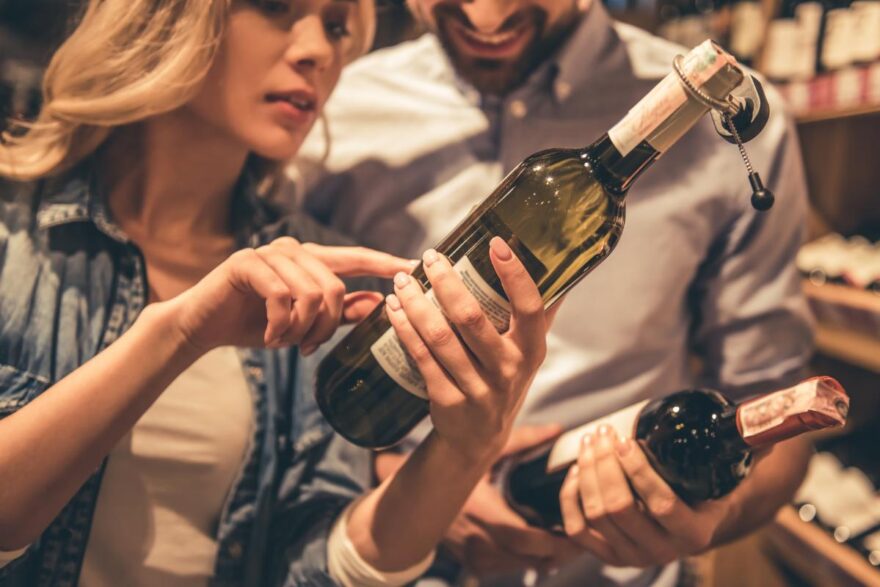Which Wine Glass? Find the perfect glass for every occasion
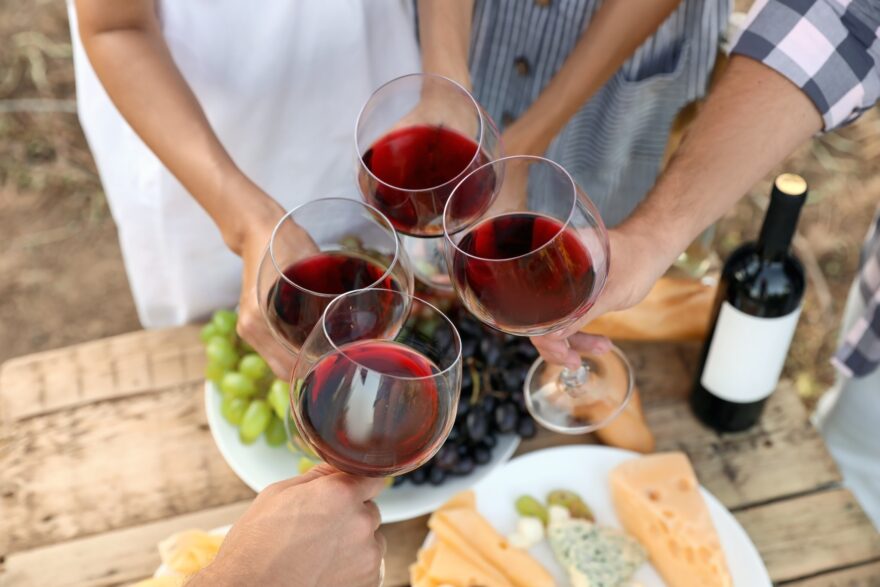

Choosing wine glasses can be a confusing task due to the sheer number of options available. These days there appears to be a different type of wine glass for every single grape varietal, and many of the glass options appear almost identical.
But have no fear, we are about to explore the main styles of wine glass, which ones are the ones you really need to have, how to hold your glasses, how to clean your glasses, and generally, how to make the most out of your wine glass options. These are investment pieces and you should choose a type that suits your lifestyle and drinking habits, as well as your budget and available storage space.
Stemless
First of all, let’s address the current trend of stemless glassware – these wine glasses are basically small glass bowls that you hold in your hand, and come in varying sizes. I do not ever recommend stemless glassware because the heat of your hand will change the temperature of the wine, and if you are wearing scented lotion or perfume on your hands or wrists, the aromas will be much too close to your nose and you will be unable to properly smell the wine. If you like the look of stemless glassware, by all means use it, but it is not suitable for serious wine tasting.
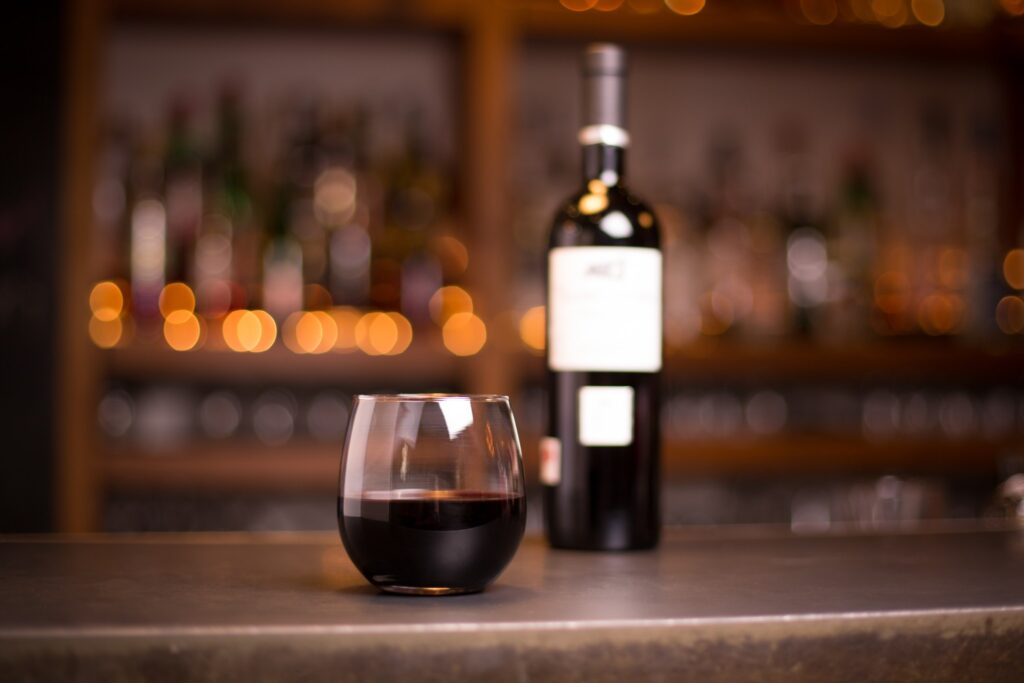
Sparkling
There are two main types of glass used for sparkling wines – the flute and the coupe. The flute is tall and narrow, while the coupe is flat and shallow. Though the coupe is the traditional glass for serving Champagne and sparkling wines, the flute is actually best suited to the task. The flute concentrates the delicate aromas and the effervescence of these wines in the narrow mouth, right under your nose, whereas the wide, flat surface of the coupe allows the bubbles to escape much faster. The coupe is beautiful for serving Champagne cocktails, but my preference is always for the flute if you want to really appreciate the wine.

Bordeaux
A Bordeaux glass is a large version of what most of us consider to be a typical wine glass – a stemmed glass with a slightly rounded bowl, tapering slightly towards the upper part of the glass. A Bordeaux glass will usually hold 530-620ml (18-21 oz). of liquid, which is on the larger side for wine glasses. The standard wine glass shape allows some oxygen to mix with the wine, releasing aromas and flavors, and the tapered shape focuses and concentrates the aromas under your nose so that they are more readily apparent.
A Bordeaux glass is used for Bordeaux blends, Cabernet Sauvignon, and other highly tannic, bold red wines because the larger bowl holds wine further away from the nose, meaning when you put your nose in the glass you get the aromas and not the ethanol of the often elevated alcohol levels. The ethanol will burn the tissues inside your nose and confuse the aroma receptors if it is the first thing to hit your nose.
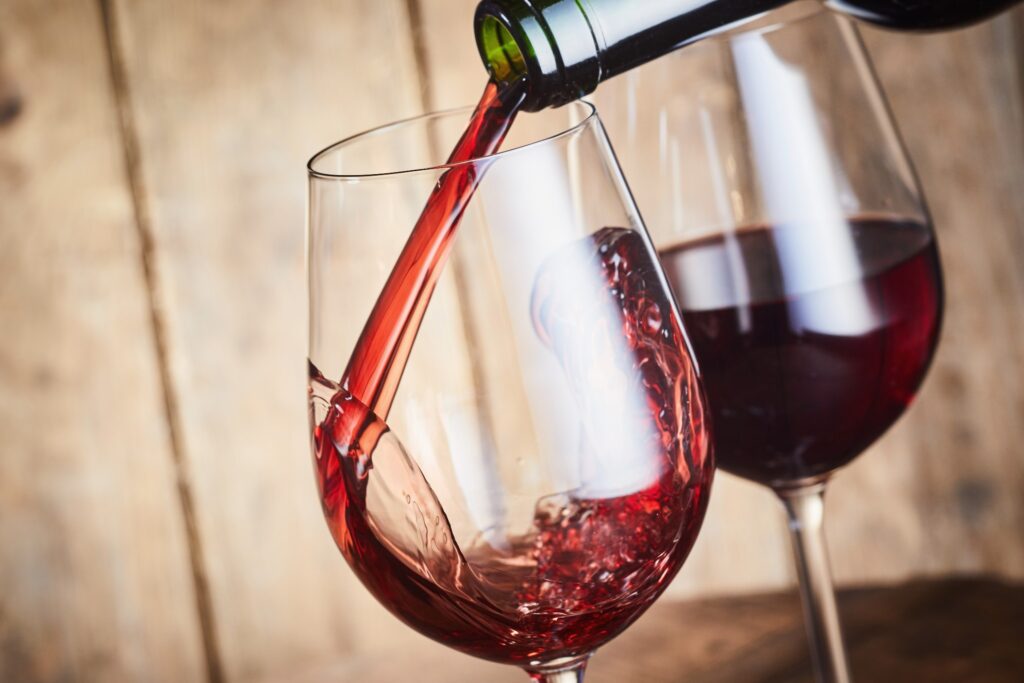
Burgundy
Burgundy glasses differ from standard wine glasses in that the bowl is rounder, but also flatter, and the lip curves in drastically. These glasses are used for more delicate and aromatic wines, generally red wines such as Valpolicella, Nebbiolo, Pinot Noir and Red Burgundy, but I also like to use them for White Burgundies.
The glass design means the wine has a large surface area, facilitating oxygen contact which will release the complex aromas. The smaller glass opening then concentrates all these aromas and offers the best, most concentrated experience for the consumer. Some glasses may taper to a small opening, but have a lip that opens out, similar to a tulip glass, which is meant to help release the concentrated aromas. These may be known specifically as Grand Cru Burgundy glasses.
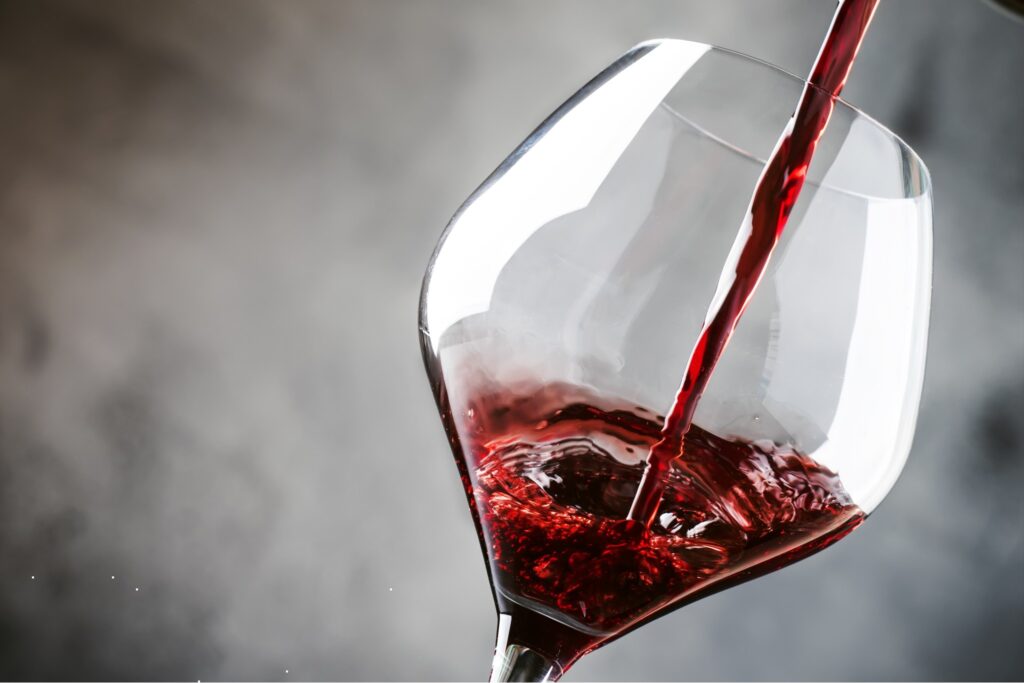
White
White wines glasses are made in the same “standard” shape as Bordeaux glasses, but are smaller and hold less liquid. These glasses are suitable for many styles of white wines, but as mentioned above, for higher-level white Burgundy wines, I prefer to use a Burgundy glass.
Ideally you would use the smaller white wine glasses because they maintain the cool temperatures and acidity of white wines better than a larger glass. The stem keeps your hands from touching the glass and warming the wine. The wine is closer to your nose which makes it easier to perceive the aromas, despite the low temperature of the liquid. Aromas become more prominent as the temperature rises. I prefer white glasses for rosé wines as well.
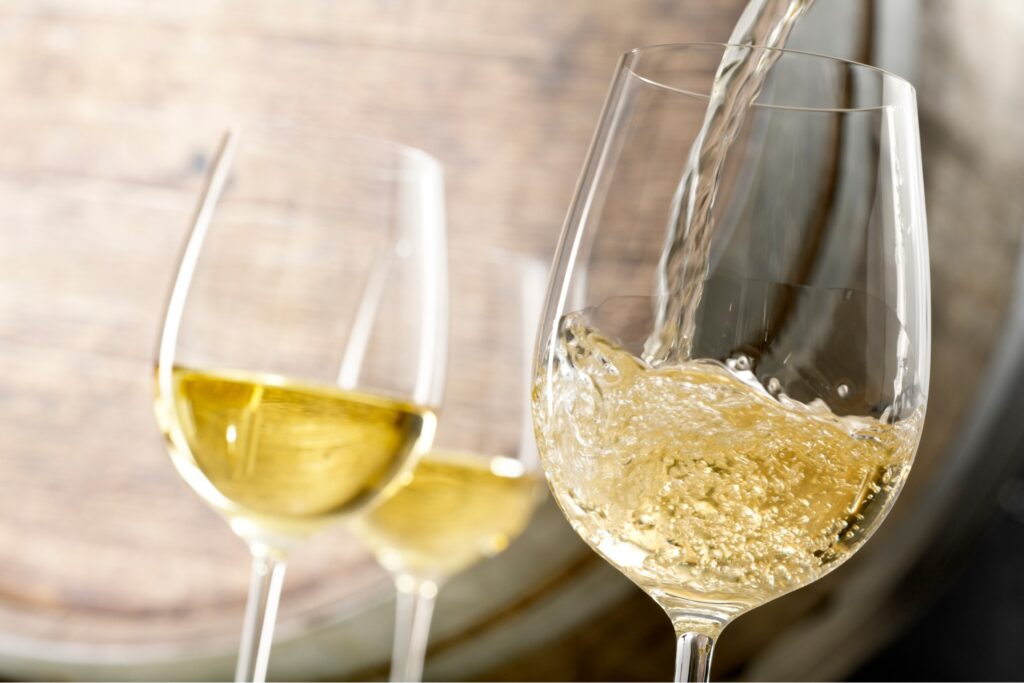
Dessert
Dessert wines glasses are used to serve Port, Madeira, Sauternes, and sherry, and resemble smaller flutes. Glasses for dessert wines are small, in keeping with the reduced pour size suitable for these wines, and have a narrow mouth to prevent alcohol evaporation. Unless you drink a lot of dessert wines, it’s probably not necessary to have glasses specifically made for them, but they can be a good investment since standard wine glasses are really too large to properly serve them.
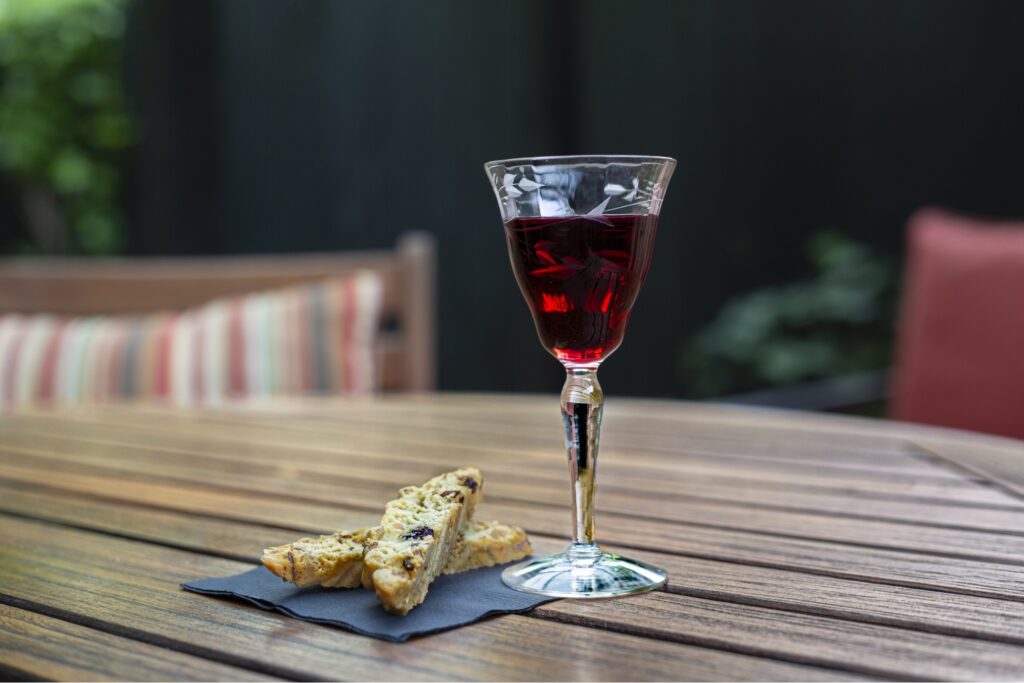
Choosing a Standard Wine Glass
Unless you drink copious amounts of wine, of many types, you’ll probably want to invest in a set of good wine glasses that you can use for many styles of wine. Which glasses you choose will depend on what you drink the most, your budget, your lifestyle, etc. Crystal glasses are the high-end choice for most wine drinkers, but if you break glasses easily or do not often drink high-end wines, these are probably not necessary.
Do purchase glass, not plastic, as plastic is not completely inert and will not offer the best wine-drinking experience. Crystal glasses will also need to be handwashed, so do not buy them if you are not willing to handwash them every time.
There are several companies that make universal wine glasses, which is a generic style meant to suit the majority of wines. If you only want to buy one set, this can be a very good option. I also like the Zinfandel style as a good standard glass. It is of medium size, depth, etc. I use Zinfandel glasses as a good all-purpose style for reds, whites, and rosés, and then also have some Burgundy glasses for my high-end aromatic wines. For these wines, I think it’s really worthwhile to have a glass adapted to what you’re drinking.

Proper Use of Wine Glasses
There is no point in buying a set of costly wine glasses if you don’t know how to properly use or care for them, so let’s review quickly some of those important points:
- Do not hold your wine glass by the bowl, take it by the stem. For the same reason I don’t recommend stemless glassware, do not hold your glass by the bowl.
- Always wash your glasses after use. Do not just rinse them, the wine will leave a residue that could affect the taste of the next wine you put in the glass.
- Make sure you rinse the glasses well to remove any soap residue.
- Handwash your best glasses! Imagine how sad you will be when the dishwasher ruins your best crystal glasses.
- Do not put wine into hot glasses. Try to make sure your glasses are room temperature, or cool them down slightly if the room is very warm, especially if you are serving chilled wine. Rinsing the glasses in cool water can bring the temperature down if it is too high.
While this is by no means an exhaustive list of wine glass styles or their proper usage, this should help you figure out which type(s) of glasses will best suit your needs and how to maintain the ones you buy. Remember that the exact type of glasses you buy will need to fit your drinking habits and budget above all else, so don’t rush out to buy the most expensive crystal glasses you can find if they will not work for your lifestyle. Best of luck in choosing your next set of glasses, and cheers to many years of drinking pleasure!
